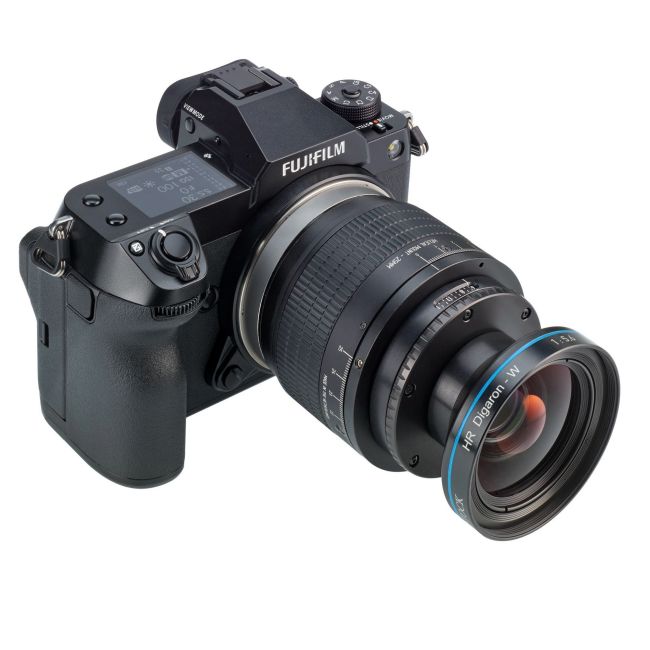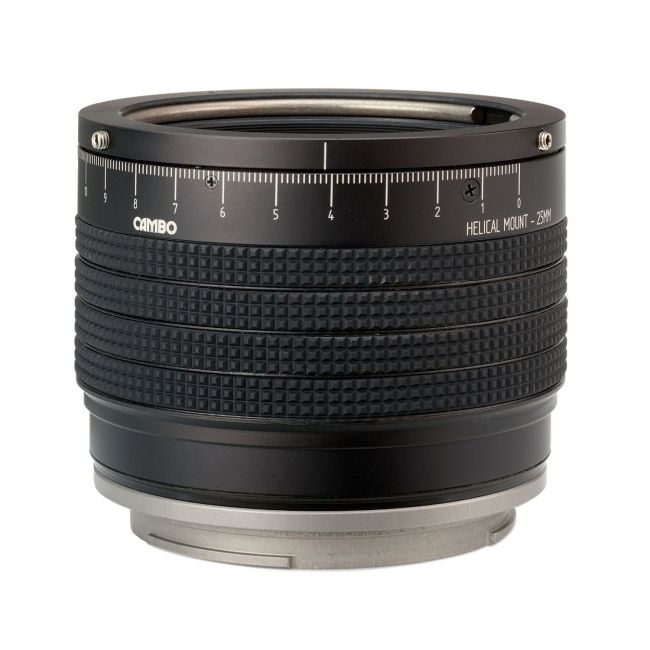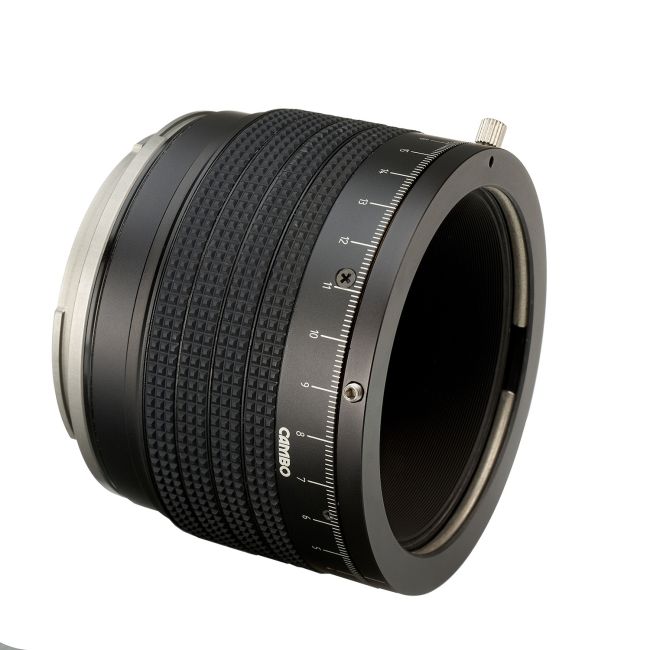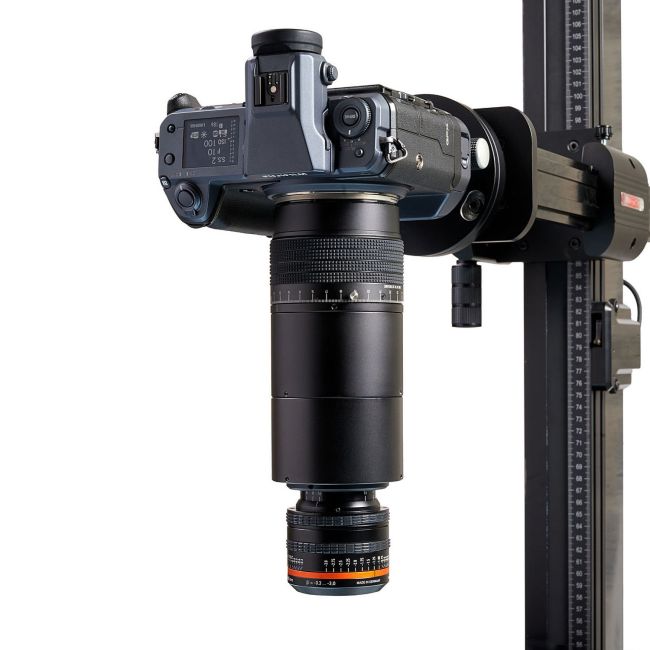The Rodenstock HR Digaron-W 90mm f5.6 lens specifically designed for use with digital cameras and digital backs, which require a smaller image circle with extreme resolution, colour correction, and maximum performance at a large aperture. This lens is recommended for use with backs as large as a 72 x 96mm maximum image area, and upon a 40 x 54mm back it will provide a view similar to that of a 58mm lens upon a 35mm format camera.
Rodenstock HR Digaron-W 90mm f5.6 specifications:
- Angle of view: 70°
- f-stop range: 5.6 - 45 (recommended 5.6 - 11)
- Image Circle: 125mm (Maximum format 72×96mm)
- Front filter thread: 67mm
- Push on Cap: 70mm
- Rear mount diameter: 51mm
The pixel size of the sensors of digital camera backs cannot be reduced just as one likes for achieving higher resolution with- out a significant increase of image noise and a reduction of exposure latitude. This is the reason why larger sensors with a resolution beyond 60 megapixels have been developed for professional digital backs. However, digital lenses with image circle diameters of about 70mm designed for smaller sensors do not allow sufficient or even any camera movements. This is why the new Rodenstock lens series HR Digaron-W with larger image circles from 90mm on and with an extremely high resolution very close to the physical limit of diffraction has been developed. This new lens series comprises the focal lengths of 40mm, 50mm, 70mm and 90mm. The last mentioned two lenses are the renamed former Apo-Sironar digital 70mm f/5.6 and Apo-Sironar digital 90mm f/5.6 which both had al- ready been calculated according to the much higher demands on freedom from aberrations for higher resolution with larger working apertures (reduced stopping down).
Rodenstock Lenses for Digital Professional Photography
Digital photography with current lenses, cameras and digital backs is superior to conventional photography in almost every case: Digital photography is faster, cheaper for high photo quantities, it makes retouching easier, allows more effective manipulation and may have a higher quality. Furthermore, the results (digital files) can be transferred across largest distances extremely fast and cheap via the internet. However, it makes much higher demands on the image rendering quality of the lens because of the special technical requirements of the sensors (e.g. regular pixel grid, planar sensor surface and a 2 mm thick protective and filterglass plate in front of it) if the theoretically possible quality increase is to be realised in practice.
Lenses for adjustable technical cameras must offer really large image angles for perspective controls and lens swing and tilt and must ensure the very best imaging quality right up to their image circle margin. The resolving power and the contrast must be at their optimum even at large apertures (f-stop 8, when used with relatively small area sensors even from 5.6) to ensure that diffraction and colour noise do not impair sharpness. Furthermore, the correction of curvature of field has to meet the highest demands because of the virtually perfectly planar sensor surface, and the lenses may not generate any colour fringes or any visible distortion. All these demands are met by the Rodenstock lenses HR Digaron-S, HR Digaron-W, Apo-Sironar digital and Apo-Macro-Sironar digital.
■ The HR Digaron-S lenses provide extremely high resolution already from open aperture (optimum: f-stop 4 to 5.6), perfectly corrected image curvature and a correction for the thickness of the sensor’s protective glass. They are the best lenses for smaller sensors up to 33x44 mm or even up to 37x49 mm with a pixel pitch below 12 μm down to 5 μm.
■ The HR Digaron-W lenses with a little bit smaller working aperture (optimum: f-stop 5.6 to 8 or 8 to 11) and a larger image circle diameter for sensors up to 40x54mm provide almost the same extraordinary characteristics.







